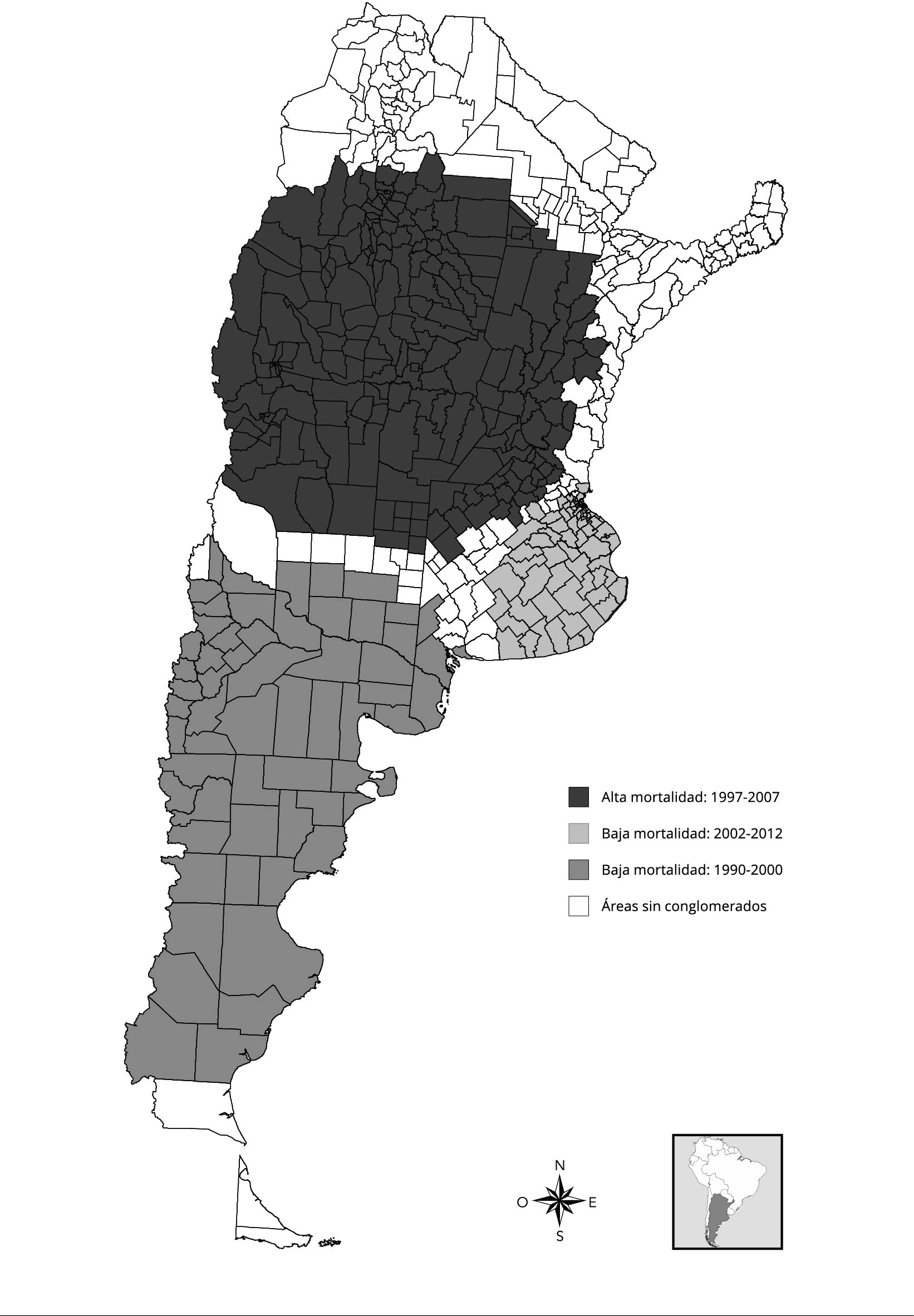Abstract:
The aim of this study was to identify spatial-temporal clusters of high and low diabetes-related mortality from 1990 to 2012 in Argentina. This was a spatial-temporal retrospective ecological study in the population older than 34 years living in Argentina, according to sex, from 1990 to 2012. The spatial units of analysis consisted of the country's departments (subdivisions of the provinces) plus the Autonomous City of Buenos Aires. Spatial-temporal exploration technique was used to detect clusters with high and low mortality. Areas with high mortality from diabetes mellitus were found in the Central-West of the country, and areas with low mortality were found in the coastal region of the province of Buenos Aires and Patagonia. Clusters with high mortality occupied a period from 1995 to 2008; clusters with low mortality shifted towards the years 2002 to 2012. The recent drop in mortality from diabetes was not geographically homogeneous, but displayed a marked decrease in the eastern area of the Province of Buenos Aires and the Autonomous City of Buenos Aires.
Keywords:
Diabetes Mellitus; Premature Mortality; Cluster Analysis

 Thumbnail
Thumbnail
 Thumbnail
Thumbnail
 Thumbnail
Thumbnail
 Thumbnail
Thumbnail



